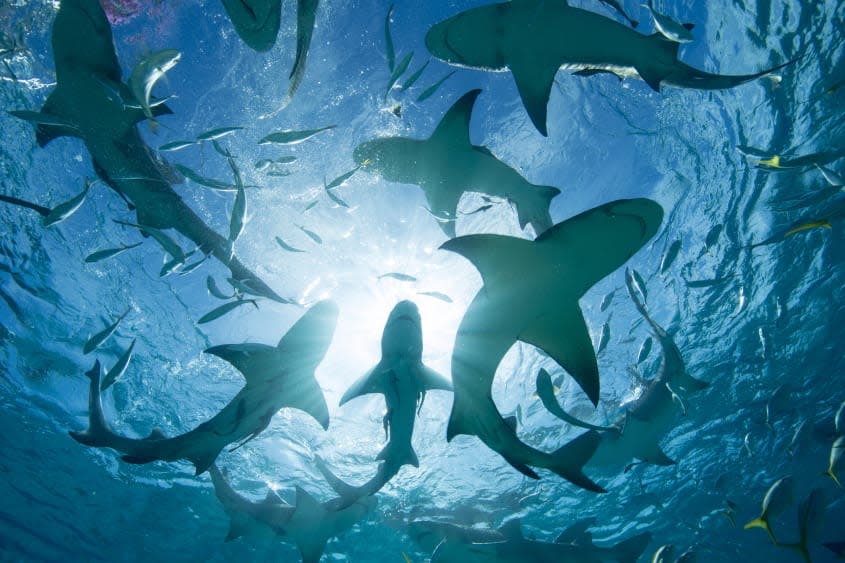Are shark attacks really on the rise?

As people head to the beach for the summer, they're probably not expecting to reenact the iconic 1978 film "Jaws." However, this has become a reality for some, as reports of shark sightings across American beaches continue to pop up in headlines.
One recent incident occurred in San Diego when a beachgoer told KFMB-TV he spotted a great white shark that was "probably 10 feet away from a surfer right outside the surf break. It was shallow for how big that shark was." And beach patrols on New York's Long Beach have increased amid reports of shark sightings. Newsweek also reported a high number of tiger sharks "spotted swimming extremely close to shores in Hawaii" after a recent spate of attacks.
But while the increased sightings are indisputable, are they translating to more shark attacks? These events are typically considered a rare occurrence; the chances of being attacked by a shark are just one in 3.75 million, according to the International Wildlife Museum. But is the recent rise in shark sightings translating to a higher percentage of attacks?
How many people are attacked by sharks?
The International Shark Attack File (ISAF), described as "the world's only scientifically documented, comprehensive database of all known shark attacks," documented 108 alleged "human-shark interactions" in 2022. The majority of these — 57 — were considered unprovoked bites, meaning they occurred "in the shark's natural habitat with no human provocation of the shark."
And the majority of these incidents also occurred in the U.S., with 41 bites recorded in American waters, ISAF reported. While only one of these attacks was fatal, this number far outpaces the second-place country, Australia, which had just nine bites in 2022. Egypt, South Africa, Brazil and New Zealand — all countries with large coastal areas — rounded out the top six spots.
While no 2023 data is available from the ISAF, TrackingSharks.com reported 41 attacks worldwide this year, with 23 occurring in the United States.
Are more people being attacked than usual?
Despite the influx of shark-related headlines, the answer is generally no. The 41 bites in the U.S. in 2022 are six less than the prior year, Lauren Gaches, the director of public affairs for NOAA Fisheries, told CBS News. Worldwide, last year's 57 unprovoked shark attacks were lower than the 74-attack average seen over the past decade, according to an ISAF study. Fatal bites also decreased, with five worldwide attacks being deadly in 2022 compared to nine in 2021 and 10 in 2020, the ISAF stated.
Shark populations are decreasing, with a 2021 study by Nature concluding that global shark totals dropped by 70% in the last 50 years. As a result, experts believe it is "extremely unlikely for swimmers and surfers to be bitten by, or even encounter, sharks," Gaches said.
Dr. Robert Latour, a professor of marine science at the Virginia Institute of Marine Science, concurred that shark attacks are "extremely rare." He told CBS that a person was "far more likely to be struck by lightning than to be bitten by a shark."
Why are more sharks being sighted?
If shark attacks are falling, not rising, why are more sightings being reported? Part of the answer could be weather-related.
Notably, there's "no data to suggest climate change is responsible for pushing sharks closer to the shore," James Sulikowski, a marine biologist at Arizona State University, told ABC News. However, many shark species are "tied to specific ranges of temperature, meaning that species are going to rearrange their locations as conditions change," Mike Heithaus, a marine biologist at Florida International University, told ABC. As global warming increases and waters get hotter, "we're seeing marine species expand their ranges [and] shifting their ranges."
Given that many shark species are endangered, increased sightings could be a "sign that coastal biomes in the U.S. are healthy," Popular Science reported. Beyond global warming, more people may also be seeing sharks "due to growing populations, more folks in the water, and better technology for both experts and the public to see and track the marine creatures."
You may also like
Florida construction and agricultural workforces diminished after new immigration law takes effect
Judge limits how Biden officials can communicate with social media companies
How solar and wind energy are saving Texans from a record heatwave

